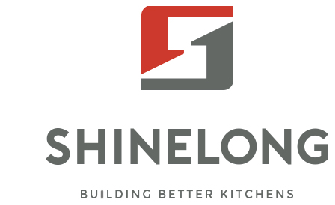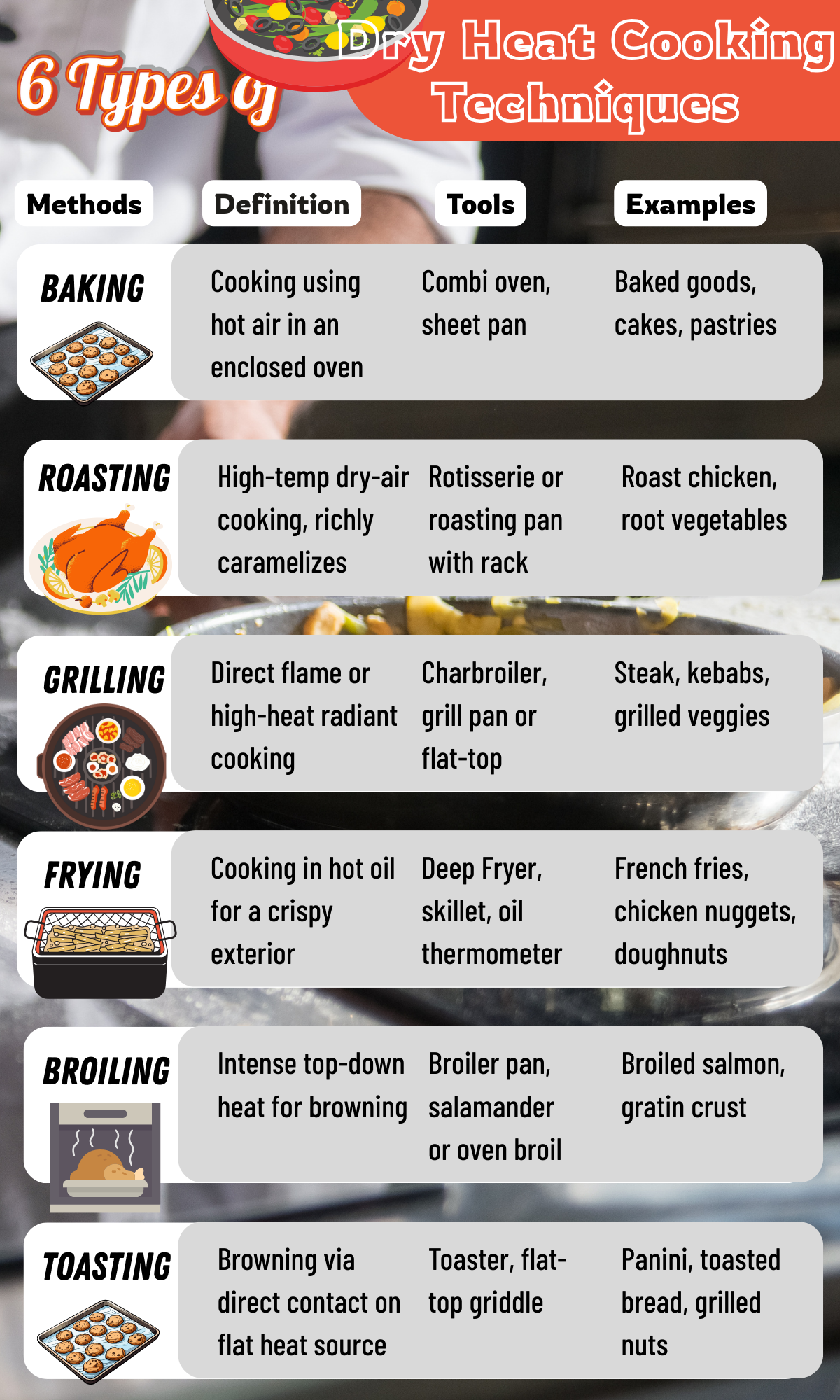News
6 Types of Dry Heat Cooking Techniques | Cooking Methods Explained
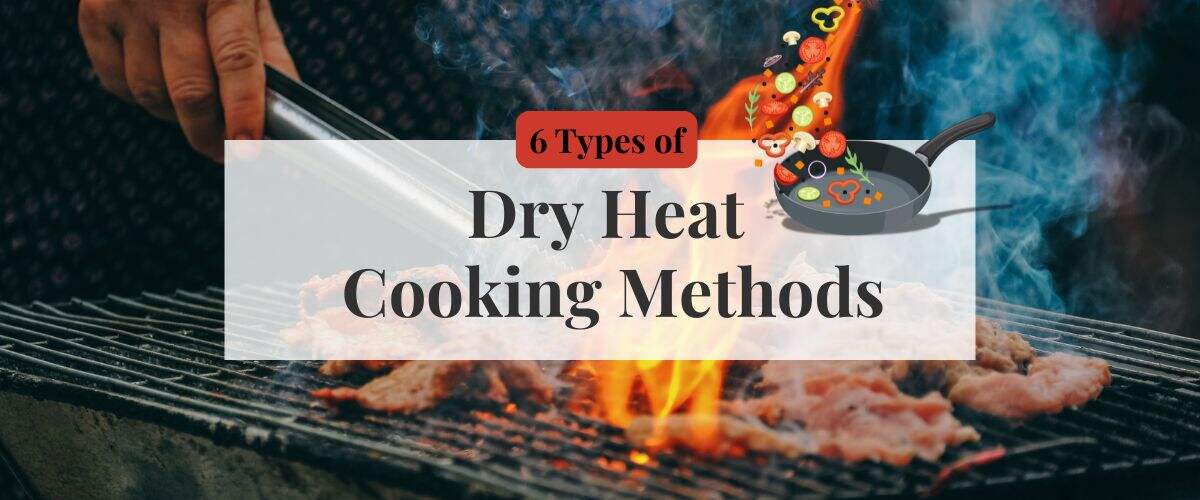
There are many types of dry heat cooking methods in the culinary world, and each technique helps chefs bring out unique and rich flavors from ingredients.
Since every foodstuff has its own texture and characteristics, choosing the right cookware and applying the most suitable cooking technique are essential for creating brilliant cuisine in a restaurant.
In this post, we’ll walk you through six common dry heat cooking techniques—baking, roasting, grilling, frying, broiling, and toasting. You’ll understand what each method is, how it transforms the palate through heat without adding extra moisture, and which cooking equipment makes them work best.
What is Dry Heat Cooking?
Dry heat cooking is a popular cooking method that transfers heat to food without moisture—no liquid bathing, just directly making the hot energy contact with fat.
For example, heat can come from hot air in an oven, direct flames from a grill, or the high temperature of a flat-top griddle. Dry heat intensifies flavor through caramelization and the Maillard reaction, helping chefs achieve the textures and tastes they desire.
This is completely different from moist-heat cooking, where steam or water carries heat gently and preserves moisture. In most commercial kitchen operations, both dry and moist methods are combined. Having a command of a cooking techniques list based on dry heat methods allows you to shine on each ingredient.
6 Dry Heat Cooking Methods

Baking
Baking is a classic dry heat cooking method that exposes food’s all sides to the heat evenly. It’s often the most familiar dry cooking method for a bakery or cafe. The buns and doughs are fairly surrounded by circulated hot air, turning them into golden loaves, cakes, or tarts with even cooking throughout. Because the air heats up the surface gently, baking is great for making a wide variety of baked goods.
Because it can help chefs create a delicate crumb or fluffy interior with crisp exteriors. The longer, lower heat encourages caramelization, often deepening flavors in pastry layers, custards, or gratin toppings.
A convection oven or combi oven is the go-to commercial kitchen equipment for consistent baking. The convection fan circulates the air for even browning. Stainless steel sheet pans, baking molds, and trays are also your best friends.
Roasting
Roasting is work similar to baking but using higher temperatures—generally around 280°C even higher—to caramelize the surface of meats and veggies. It surrounds food with hot, dry air, typically inside a hot chamber.
However, there's still a little bit difference between the two, when you step into the back of house, baking literally refers to bread and any baked good. Roasting indicates meats, poultry, vegetables or some seafood.
Roasting suits meats (like beef, lamb, whole chicken), hearty vegetables (like squash, carrots, Brussels sprouts), and even nuts. In a commercial kitchen, a multi-layer rotisserie is essential, handling large trays with consistent heat. Roasting pans, wire racks, and roasting baskets help air circulate for even browning.
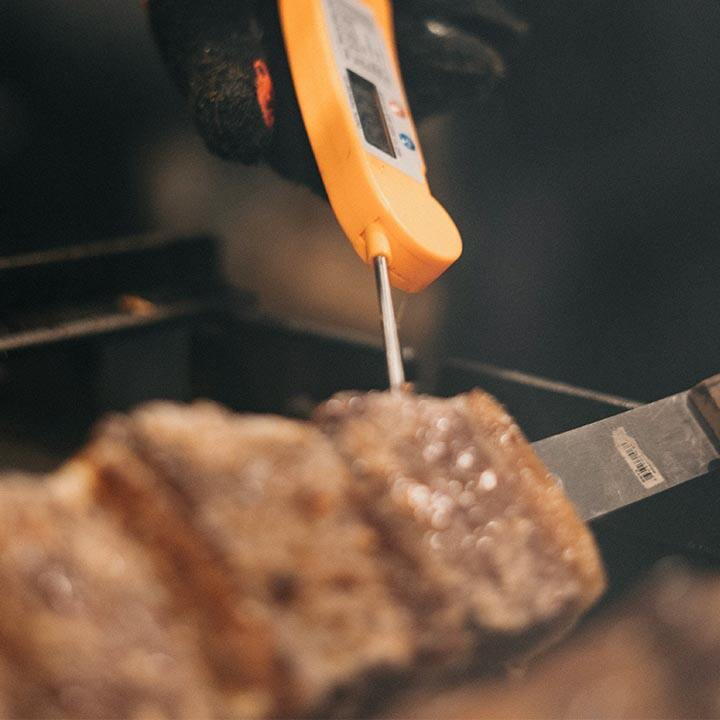
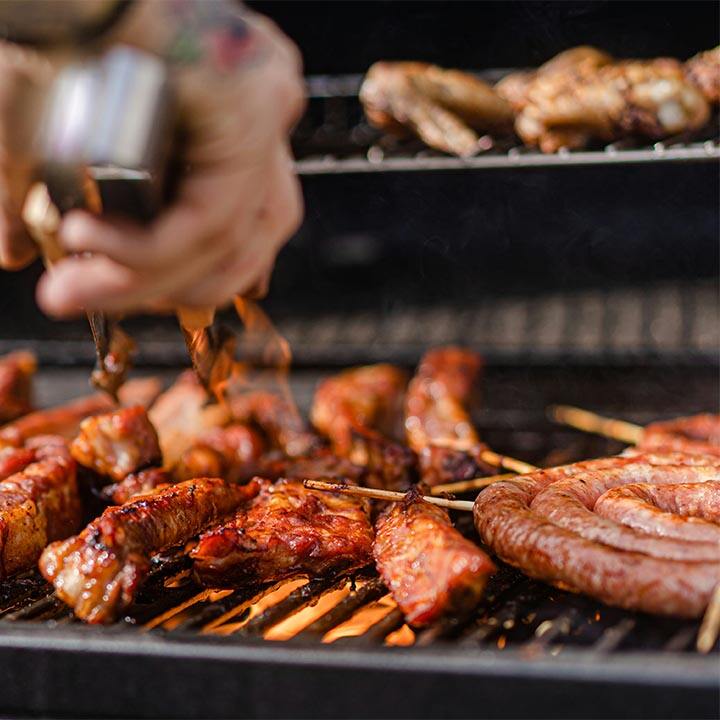
Grilling
Grilling is one of the most loved dry heat cooking methods, perfect for adding bold flavor and texture. It uses straight heat to cook meals quickly no matter charcoal, gas, or even wood fire.
Chefs in commercial kitchens often prefer to use this cooking technique for meats, seafood, and vegetables because it brings a smoky aroma that can’t be matched by other methods. The high heat locks in juices while the surface caramelizes, creating a crisp outside and tender inside.
From juicy steaks to charred corn, grilling helps highlight natural ingredients through direct flame. In a busy kitchen, it is also efficient, cooking large portions at once without losing quality. That’s why grilling remains an indispensable skill in any professional cooking operation.
Frying
Frying refers to cooking food in hot oil or fat, giving it a crisp, golden, and crumbly surface with a tender and light inside. There are different styles, such as deep frying or shallow frying. Each method provides a unique palate and flavor.
Popular foods include large cuts of meat like pork chop or chicken breast, whole poultry fried chicken, tempura shrimp, potato fries, and spring rolls.
Although it delivers untouchable results, frying requires precise temperature control and a proper way to avoid overcooking. With the right technique, it can create light, crunchy, and satisfying dishes. That is the reason why you need to choose the top-tier deep fryer for your restaurant. Frying continues to be one of the most common and versatile methods in kitchens worldwide.
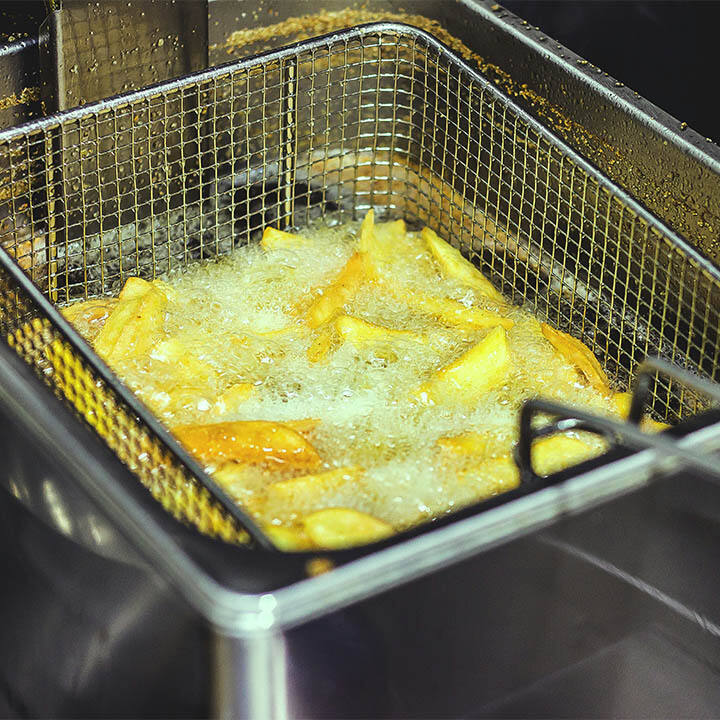
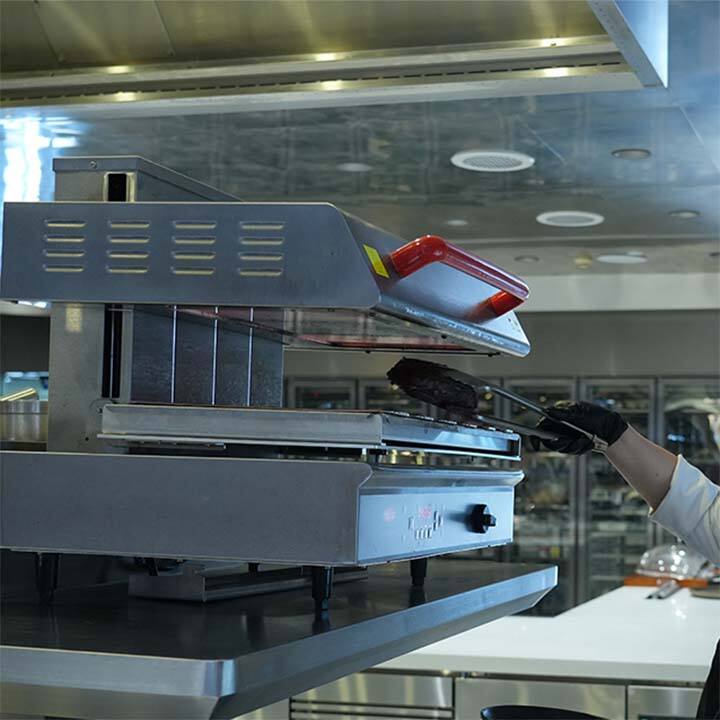
Broiling
Broiling is like upside-down grilling—another brilliant cooking dry heat method, but this time, heat comes from above, usually via a broiler element. It’s fast and intense—perfect for a golden crust or caramelized topping, for example, gratins, steaks, or melting cheese.
The taste profile is all about concentrated, quick browning, which allows the chef to add textural contrast and a hint of toastiness without drying out the rest. Broiling shines when finishing dishes—like searing a marinade or melting a gratin crust. Commercial salamander broilers or charcoal ovens are essential units here.
Use broiler-safe pans or racks to keep food close to the heat. Just watch closely—broiling is fast and unforgiving, so timing—and attention—is everything.
Toasting
As a chilling dry heat cooking method that involves direct heat through a hot flat surface or heat top—think sandwiches pressed golden, nuts toasted to smoky perfection, or squid sizzling on a griddle. The flavor is cozy and rich—warm bread with nutty char, lightly crisped tortilla edges, or toasted seeds with aroma. Toasting is subtle, but hard to reject.
You’ll see toasting used for bread, seeds, nuts, tortillas, or grilling panini. In commercial kitchens, flat-top griddles and sandwich presses are go-to tools—an ideal solution for creating that golden crust and crisp bite in a compact space. For some hospitality foodservice establishments, like hotels or banquets, slightly burnt toast from commercial toasters absolutely is the choice to begin your customer's brand new day
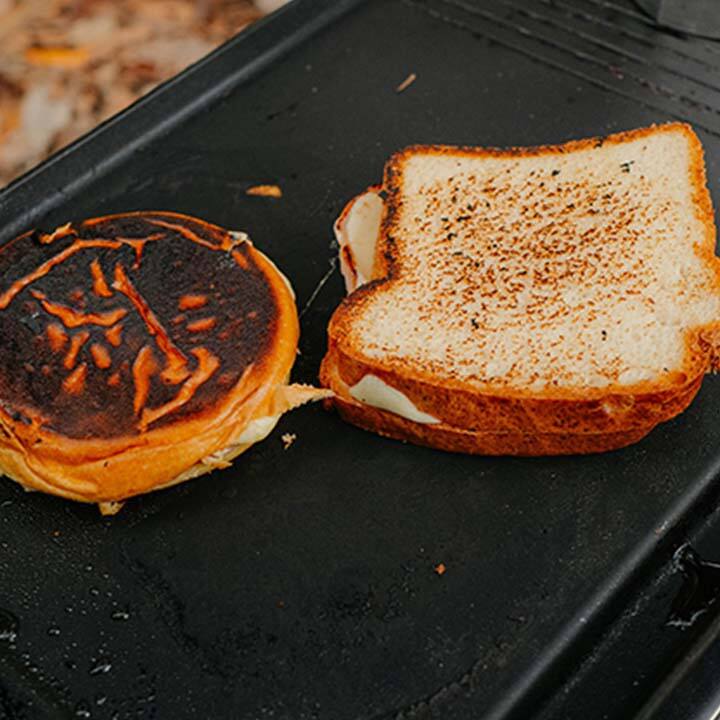
How to Choose the Right Cooking Technique
Here’s a quick decision cooking method list:
- Want structure and consistency? Go baking.
- Want caramelized depth? Choose roasting.
- Looking for smoke and grill marks? Set up grilling.
- Crave crunch? Try frying.
- Need a fast, crispy top finish? Pick broiling.
- Want quick warmth and toastiness? Use toasting/griddling.
Match technique to ingredient and goal—this is how different cooking techniques become powerful tools in your kitchen.
There you have it: a flavorful lineup of dry heat cooking methods—from oven-based baking and roasting, to direct-heat grilling, frying for crunch, to fast broiling, and charming griddling. These dry heat cooking techniques help you build a diverse flavor menu for your restaurant.
By understanding the cooking method definition and choosing the right technique—for why, when, and how—you unlock new layers of taste and texture in every dish. Try experimenting with this cooking techniques list and engage with the art of dry heat—your kitchen will be changing.
 After-Sales:
After-Sales:
 EN
EN
 AR
AR
 HR
HR
 NL
NL
 FI
FI
 FR
FR
 DE
DE
 EL
EL
 HI
HI
 IT
IT
 PT
PT
 RO
RO
 RU
RU
 ES
ES
 TL
TL
 ID
ID
 SL
SL
 VI
VI
 ET
ET
 MT
MT
 TH
TH
 FA
FA
 AF
AF
 MS
MS
 IS
IS
 MK
MK
 HY
HY
 AZ
AZ
 KA
KA
 UR
UR
 BN
BN
 BS
BS
 KM
KM
 LO
LO
 LA
LA
 MN
MN
 NE
NE
 MY
MY
 UZ
UZ
 KU
KU
